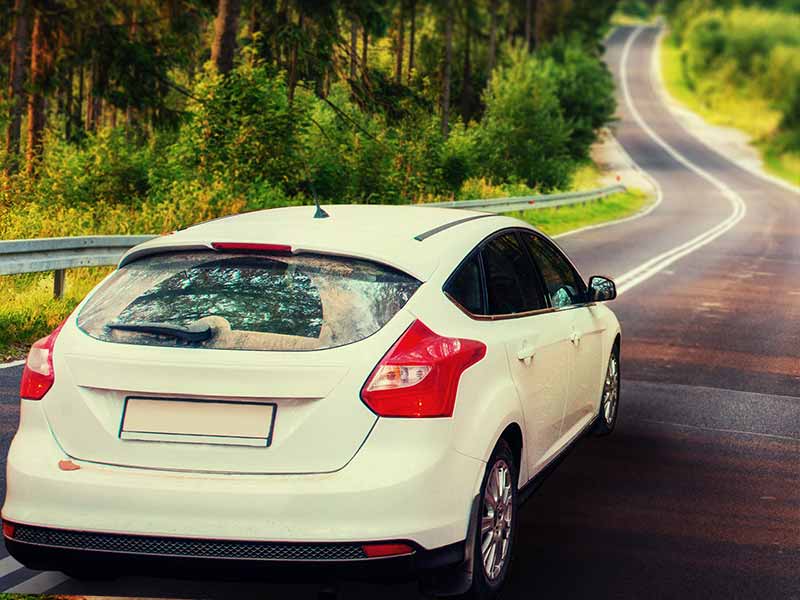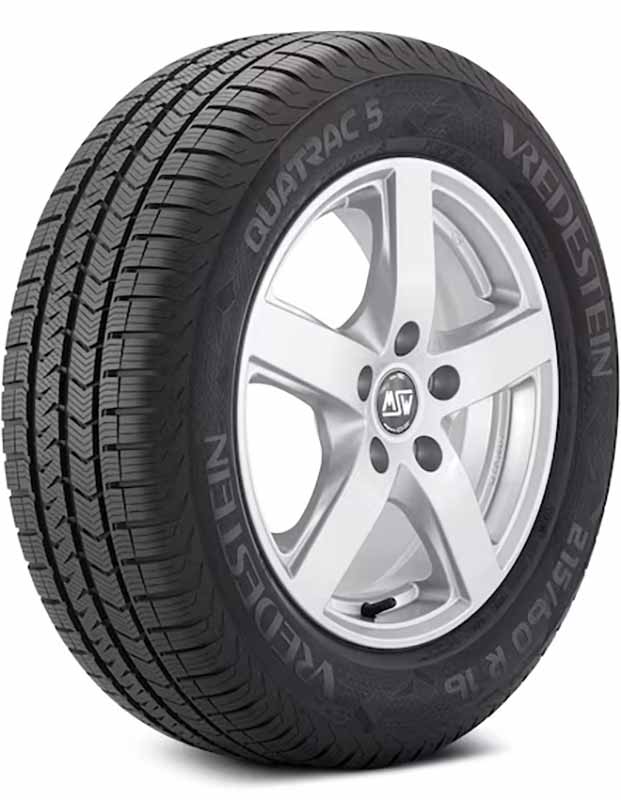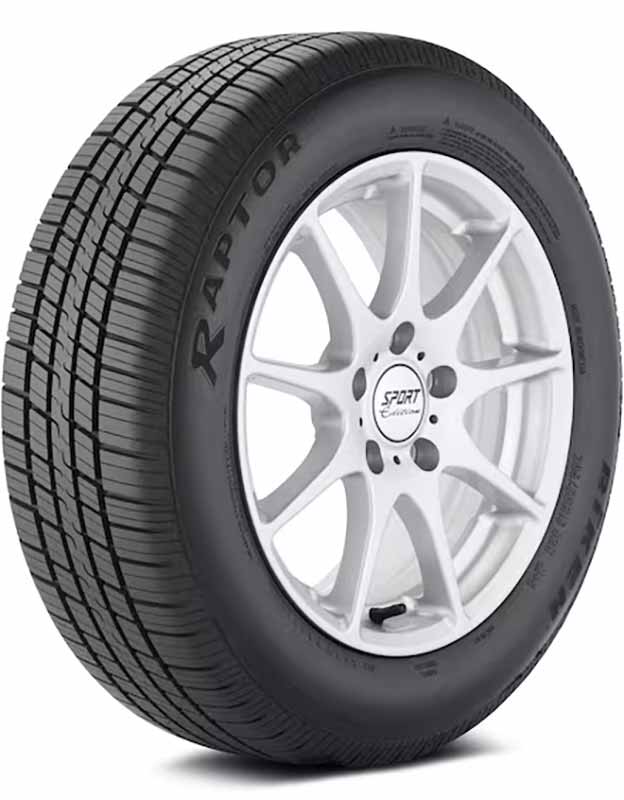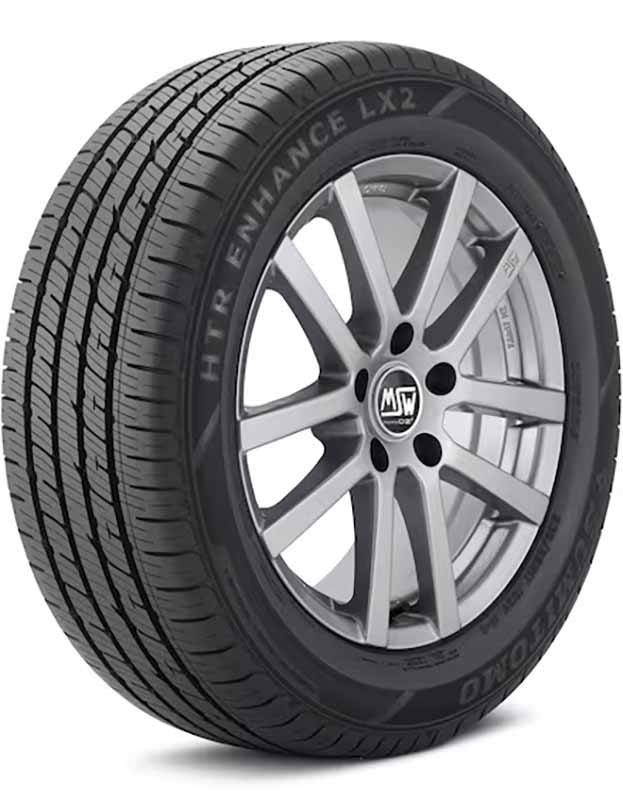Front to rear tire rotation is a good pattern to use, but it isn’t the best. There are many different ways to rotate your tires. Each rotation pattern has a purpose and a situation when it’s best to use it.
The best tire rotation patterns involve rotating tires front to back as well as across to the opposite side of the car or truck. This isn’t always possible though.
Front To Rear Tire Rotation
Rotating tires only between the front and rear axles without crossing from side to side is ideal only when you have directional tires. Directional tires can’t be rotated from one side to the other without causing the directional tread pattern to become reversed.
Let’s dive into what a front to rear rotation pattern looks like as well as answer some common questions about this type of rotation pattern.
Front To Rear Tire Rotation Pattern
The front to rear pattern of tire rotation is pretty simple compared to most other options. The front tires move to the rear axles and the rear tires move to the front. The driver’s side tires stay on the driver’s side. And passenger side tires stay on the passenger side.
Is It Better To Cross Rotate Tires?
Cross rotating your tires is a better choice and will help them wear more evenly. There are differences in how tires wear from side to side and the many cross rotation patterns help even out these inconsistencies.
The differences between front and rear axles is much more significant which makes rotating front to rear much more important than side to side, but doing both is much more effective.
Can I Rotate My Tires Front To Back?
Almost everyone can benefit from rotating their tires from front to rear, but as mentioned earlier, there are better patterns to choose for most people.
If you have directional tires you have no other option since swapping sides will cause them to spin in the wrong direction.
When Shouldn’t Tires Be Rotated Front To Rear?
If you have different sized directional wheels and tires on the front and rear axles you can’t rotate your tires at all.
When your wheels and tires are differently sized on the front and rear, it should be fairly obvious that they can’t rotate front to back. This is called staggered wheels.
Staggered wheels are common on rear wheel drive vehicles with a more sporty suspension geometry. For instance, Corvettes, Porsches, and many BMWs will have staggered wheels.

Staggered wheels and tires are usually smaller and narrower in the front and wider in the rear. Larger wheels and tires in the rear help rear wheel drive and all wheel drive vehicles get more traction when accelerating and when cornering.
Rear wheel drive vehicles also are more inclined to oversteer and the wider contact patch better helps the driver maintain control in turns.
Why Rotate Tires Front To Back?
Rotating your front tires to the rear and rear tires to the front will have the most benefit when compared to rotating side to side. This is because the largest difference between suspension geometries and wear patterns occur between the tires on the front and rear axle.
It’s best to use a rotation pattern that includes both front to back and side to side rotation. Even side to side rotation has benefits compared to not rotating your tires at all, but is less preferred.
You should refer to your owner’s manual for the pattern that is recommended by your vehicle manufacturer for your car or truck. If you are unable to find any documentation for your specific vehicle, you can refer to our guide on tire rotation patterns to find the best one for your situation.
How Often Should You Rotate Your Tires From Front To Rear?
How often you rotate your tires should follow the requirement of your tire manufacturer to maintain your tire warranty. Most tire manufacturers will require proof of regular tire rotation if you have a need to make a warranty claim.
They will also usually require that your tires be rotated within a maximum amount of miles. This is usually between 5,000-8,000 miles.
How Do I Know If My Tires Are Directional?
Directional tires will have a marking on the sidewall that indicated which way the tire should spin. If your tires have this marking on the sidewall, you will know that your tires are directional.
Some car owners will confuse asymmetrical tires with directional tires. Asymmetrical tires will have a marking on the sidewall indicating which sidewall is the one that should face outward.
Asymmetrical tires can spin in either direction but they are designed to specifically to have one side of the tread on the outer edge to increase cornering grip and water shedding.
What Happens If Directional Tires Are On Wrong?
Directional tires are designed to shed water and grip properly when spinning in a specific direction. If directional tires are mounted backward, the tires will not grip properly and have a much more difficult time shedding water away from underneath the contact patch in wet conditions.
The most severe side effect will be particularly poor performance in the rain. Worse traction will likely be noticeable, but road noise will also be much greater. Tires are specifically designed to reduce noise and if they are spinning opposite of the intended design the tread blocks will not hit the pavement in the desired order or pattern.
Non Directional Tires Rotation Patterns
If you don’t have directional tires on your car or truck, you should consider a tire rotation pattern that includes both front to rear and side to side rotation.
Rotation patterns are usually determined by which axle drives the vehicle forward. Here are the 3 most popular rotation patterns based on drive axle.
Front Wheel Drive Vehicles
Front wheel drive vehicles put the most stress on the front tires. To get the most even wear from them, the forward cross pattern is the pattern recommended to use.
The forward cross will ensure that each tire will eventually make its way to every position around the car or truck.
Forward Cross Pattern
The forward cross moves the rear tires forward and across to the opposite sides of the vehicle. The front tires move to the back and remain on the same side.
Rear Wheel Drive Vehicles
Rear wheel drive cars and trucks put the most stress on the rear tires. To get the most even wear from them, the rearward cross pattern is the pattern recommended to use.
The rearward cross will ensure that each tire will eventually make its way to every position around the car or truck.
Rearward Cross Pattern
The rearward cross moves the front tires rearward and across to the opposite sides of the car or truck. The rear tires move to the front and remain on the same side.
All Wheel Drive Vehicles
All wheel drive vehicles put stress on all of the tires around the car or truck, but they tend to be biased toward the rear. To get the most even wear from them, you can use the rearward cross or the X-pattern.
The rearward cross will ensure that each tire will eventually make its way to every position around the vehicle. The X-pattern is acceptable but only swaps a tire between two positions.
X-Pattern
The X-pattern moves the front tires rearward and across to the opposite sides of the vehicle. The rear tires move forward and across to the opposite sides of the car or truck.
The X-pattern is also acceptable to use on front or rear wheel drive vehicles but is less than ideal since each tire won’t move to every position.
Final Thoughts
Rotation patterns are important to ensuring that your tires wear evenly. While you can rotate your tires front to rear and see a benefit, it may not be the best choice. You should refer to your owner’s manual for the pattern that is best for your car or truck.
Patterns are usually determined by the drive axle. The best patterns will include both front to back and side to side rotation but also ensure that each tire will eventually make its way to every position around your car or truck.
If you have directional tires on your vehicle, you’ll be restricted to only being able to rotate your tires front to rear. Directional tires will spin in the wrong direction if you swap them to the other side of your car or truck.
If you have staggered wheels and tires you won’t be able rotate front to rear and will only be able to rotate side to side.
Be sure and choose a rotation pattern that will maximize your tire life and make sure you’re keeping your tires rotated according to your tire manufacturer’s requirements for maintaining your tire warranty.
Resources
Below are some links you may find helpful when learning about tires






